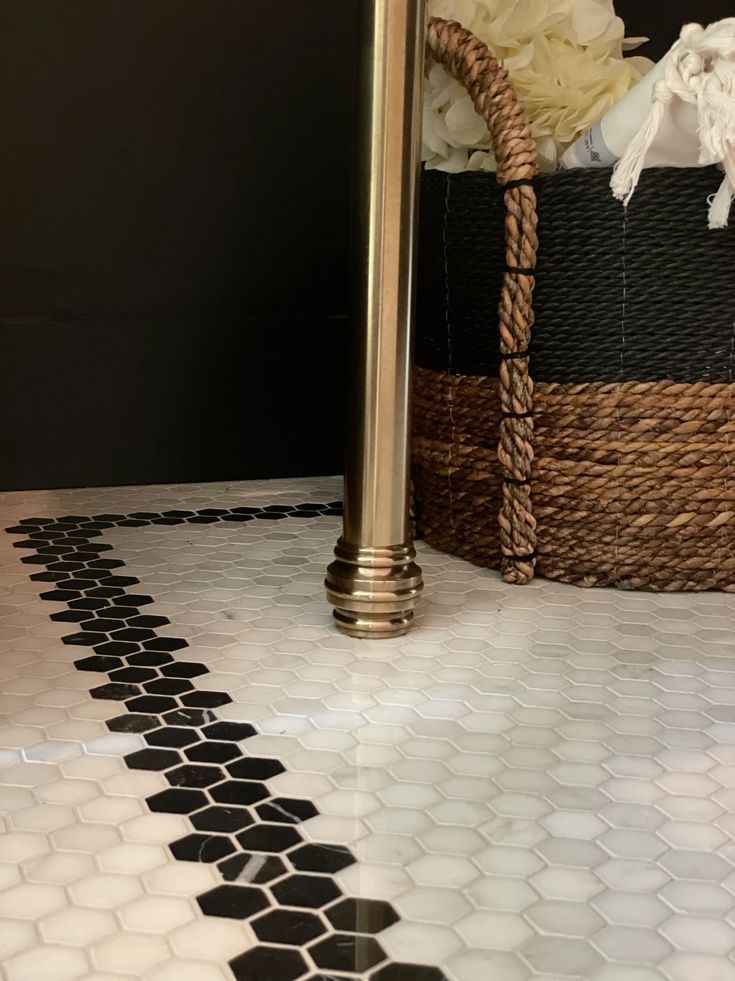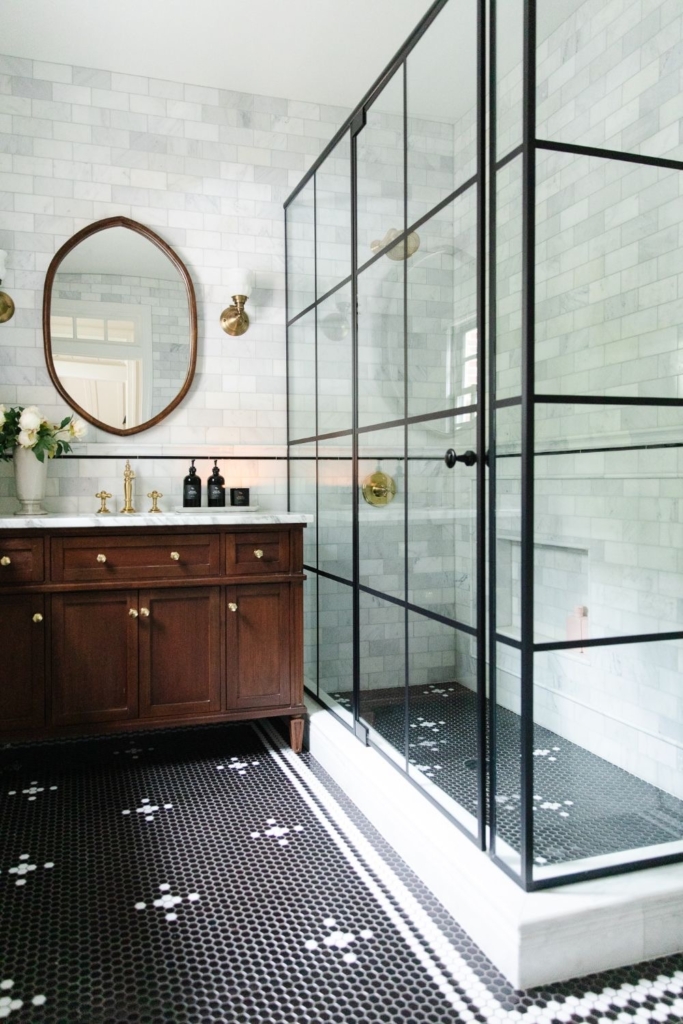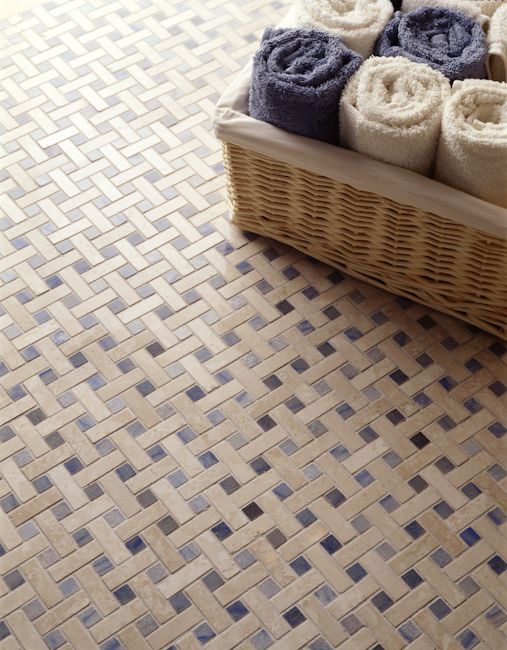




A nod to the past with timeless design
Helena, Montana’s historic homes—particularly the ornate Victorians and warm Craftsman bungalows—are rich with detail, character, and craftsmanship. Among the enduring elements that connect these homes to their origins are the tile patterns underfoot. From decorative entryways to bathroom floors and kitchen backsplashes, these patterns told stories of elegance, function, and artistry.
Here are five tile patterns that were popular between the late 1800s and early 1900s, and how they still show up in modern design:
1. Penny Tile
History: Introduced in the early 1900s, penny tile gained popularity for its affordability and versatility. The small, round ceramic pieces were often laid in white with black accents to create simple borders or more elaborate mosaics.
Why it lasts: Its scale makes it perfect for tight spaces, and it adds instant vintage charm. It’s still popular in bathrooms, mudrooms, and even commercial spaces wanting to nod to turn-of-the-century roots.
2. Basket Weave
History: This pattern originated in the Victorian era and gained momentum in early 20th-century American homes. It mimics the over-under pattern of woven baskets and was often used in monochrome black and white or soft pastels.
Why it lasts: Basket weave tile offers visual texture without being overwhelming, grounding spaces with historical richness while still feeling clean and geometric.
3. Hexagon Tile
History: Classic 1” hex tiles date back to the 1890s and were commonly used in bathrooms of Victorian homes. Often laid in white with occasional black accent tiles, they reflected the era’s move toward cleanliness and order.
Why it lasts: The hex shape feels timeless and plays well in both minimalist and historic interiors. You’ll see it revived in modern farmhouse bathrooms, eclectic kitchens, and even shower floors.
4. Subway Tile
History: Though it originated in New York subways in 1904, this clean, rectangular tile quickly made its way into American homes, especially Craftsman kitchens and bathrooms where practicality met style.
Why it lasts: Its adaptability is unmatched. Whether installed in a traditional running bond or a modern vertical stack, subway tile bridges historical character and contemporary polish.
5. Checkerboard Tile
History: A pattern rooted in classical European design and adopted in America throughout the 19th century, checkerboard floors were often seen in Victorian entryways, parlors, and kitchens. Typically using marble or ceramic in contrasting tones—most often black and white—it created an instantly striking first impression.
Why it lasts: Checkerboard tile is dramatic and graphic, yet timeless. Today, it’s seeing a major resurgence in everything from foyers to powder rooms—often updated with color swaps or matte finishes to blend old-world influence with modern mood.
These classic patterns are more than just aesthetic choices—they’re pieces of history still walking with us today. Whether you’re restoring a heritage home or designing something new with old-soul charm, these tiles offer a tangible link to Helena’s architectural story.



